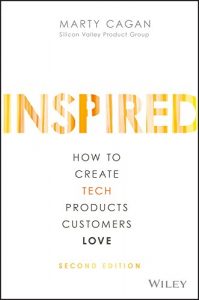
Key Takeaways:
1. The importance of understanding customer needs and desires in order to create successful products.
2. The concept of “customer empathy” and how it can be used to drive product innovation.
3. The value of creating a clear product vision and aligning all team members towards it.
4. The role of experimentation and iteration in product development.
5. The need for a strong product culture and how to foster it within an organization.
Practical Application:
1. Conduct thorough customer research and gather feedback to understand their pain points and preferences.
2. Use customer empathy to put yourself in the shoes of the customer and design products that truly meet their needs.
3. Develop a clear product vision and communicate it effectively to all team members to ensure alignment.
4. Embrace a culture of experimentation and iteration, constantly seeking feedback and making improvements to the product.
5. Foster a strong product culture by promoting collaboration, open communication, and a focus on customer satisfaction.
Valuable Insights for Leaders and Managers:
1. Chapter 2: “Customer Empathy”
– understanding the importance of putting the customer at the center of product development.
2. Chapter 3: “Product Vision”
– learning how to create a clear and compelling product vision that guides the entire team.
3. Chapter 5: “Experimentation and Iteration”
– understanding the value of continuous improvement and adapting to customer feedback.
4. Chapter 7: “Product Culture”
– learning how to build and maintain a strong product culture within an organization.
Effective Case Studies and Examples:
1. The story of how Airbnb used customer empathy to understand the needs of their users and create a successful product.
2. The example of how Google’s “20% time” policy fostered a culture of experimentation and led to the creation of successful products like Gmail.
3. The case study of how Intuit used customer research and experimentation to improve their product, TurboTax.
4. The example of how Apple’s product vision and strong product culture have contributed to their success in creating innovative products.
As the subtitle of the book suggests, the main objective and scope is to answer one question and one question only- How do you build successful tech products? The book isn’t really a step by step method to creating a successful product, instead, it is an account of the author’s experience working with several tech companies. Throughout his career, he has focused on building tech products.
The valuable lessons learnt from his experience are condensed into the following points:
1. Lessons From Top Tech Companies:
- The author points out that there is a difference between how the best companies built products and how most of the companies built their products.
- Behind every great and successful product, there is someone who worked tirelessly to knit the whole process together and lead different teams to merge technology and design to solve a real problem. That person is usually a talented product manager.
In the tech world, there are three stages of an organisation:
- Startup– They have not achieved product/market fit. Their ultimate purpose is to achieve that.
- Growth stage– They have achieved product-market fit. They are ready for the next obstacle i.e how to grow and scale effectively.
- Enterprise– Their main objective is to constantly focus on product innovation.
2. The Right People:
- Every great product starts with the right people on the cross-functional product team.
- Once the right people are hired, it’s a strategy of how you set them up for success by defining their roles, and the people you choose to oversee them. This will determine the success and failure of managing the right people.
- Leadership plays a vital role in a tech organization. The central objective should be to recruit, develop and retain powerful talent.
- True leadership is a crucial part of what divides a great product from merely good ones.
3. The Right Product Manager:
- The right product can only be successfully be developed if there is a right product manager(PM) behind it.
- A PM is not someone who merely manages the process of building the product, instead, according to the author, is a multi-faceted person who has a vision for the product.
- They are data-driven and are completely invested and passionate about delivering a great product.
4. Great Process:
- The author focuses on the actual process of product development instead of agility, team framework or execution etc.
- Product teams should spend adequate time discovering something new. Exploring with various data that may potentially work for customers.
- Constantly focus on validating ideas.
5. Great Culture:
- One of the most important areas for tech companies to focus is on their organizational culture.
- Culture is all-encompassing in that it defines how the company hires people. How motivated the team is and how product decisions are made.
- Before diving into what great products to build, it is to define the environment in which those products will be created.
Answer these important questions:
- What is the purpose of your company existence?
- What is your North Star?
- What does your company value the most?
- Do all employees know the company mission and values? Do they practice them?
Leave a Reply